The third outdoor room of the Franklin Delano Roosevelt Memorial along the Tidal Basin in Washington, DC, is dedicated to FDR’s leadership of the United States through the tumultuous years of World War II. These years marked his unprecedented third term as president, a feat which no other will duplicate due the two-term limit mandated in the 22nd Amendment to the Constitution after FDR’s death.
From an aesthetic viewpoint, this is the gallery in which Roosevelt’s presence feels most prominent. The focal point of the space is a 10-foot-tall statue of FDR seated in a chair enfolded by his cape, his face showing the heavy burdens of war leadership but his gaze uplifted and confident. A statue of his dog Fala, a Scottish terrier, sits at his feet, accompanying his master, and is in my mind suggestive of the loyalty of the nation itself to the president.
In the sculpture, one can sense the toll these hard and terrible years have taken on FDR as commander in chief. But the bigger impact of the work is FDR’s strength. He is seated in a chair with his cape draped around his shoulders, but the detail I think stands out in the work is his large, strong hands, which are highlighted by the pinky ring containing his family’s crest that FDR wore in real life. All these elements come together to create an unforgettable image of a man who is a master and commander of his moment.
In my opinion, Roosevelt’s true mastery of the war was in 1940–1941, when the United States was not a combatant, and deep rifts on how to respond bitterly divided the American people. In the face of strong domestic isolationist sentiments, FDR’s masterstroke was Lend-Lease. While the United States officially remained neutral, Lend-Lease essentially picked up the war tab for Britain at a time when she was the lone democracy fighting Nazi Germany. As a historian, I believe that timing is everything. Had Winston Churchill not been able to rally the British people to maintain their struggle in 1940, thus providing FDR with an opening he brilliantly exploited with Lend-Lease, then Adolf Hitler might have been able to continue fighting on terms that would have enabled Germany to win World War II. It was a desperate situation in spring 1941. Roosevelt and Churchill had to await events and mistakes, and Hitler did not disappoint. Hitler made his first great mistake with the Barbarossa invasion of the Soviet Union on June 22, 1941 (FDR authorized Lend-Lease aid to the Soviets on October 30). After Japan attacked Pearl Harbor on December 7, Hitler made his second great mistake by declaring war on the United States on December 11, 1941. The Japanese attack on Pearl Harbor united American public opinion overnight, and FDR would now lead an enraged and totally committed democracy into war.
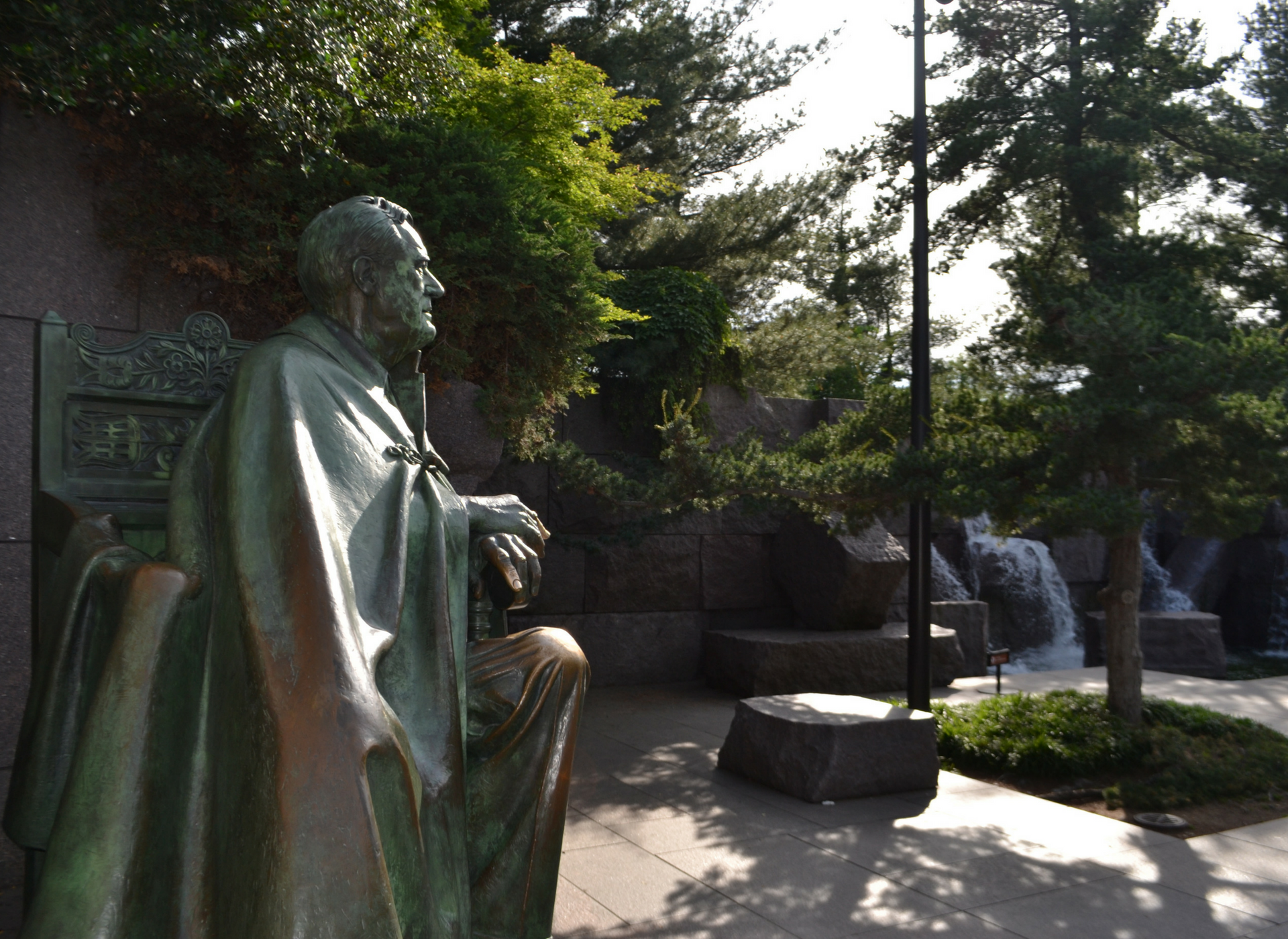
During the war years, Roosevelt the warlord was the supreme geopolitical strategist of his country and commander in chief of the armed forces. Here's an interesting insight into some of his leadership style: When he received documents with which he agreed, he would write “OK FDR” in the margins as a casual approval of the suggestion. But if it was something that he disagreed with, Roosevelt would have his denial typed up and signed with his full name and title, including “Commander in Chief”—a subtle, formal, and effective manner of reinforcing his command in all matters military and presidential.
To the right of the statue in the space is a waterfall composed of jagged blocks of granite jutting at turbulent angles. The crashing water symbolizes the chaotic destruction of a global war.
I often think of FDR’s radio speech of February 23, 1942, in which he asked Americans across the nation to pull out their maps of the world to follow his tour through unfamiliar geography in order to grasp his explanations of why and how this global war was to be unique in its challenges. It was his judgment that Nazi Germany posed the greater threat, and “Germany First” strategy followed, but there were great challenges to be overcome—namely that the best military option to defeat Germany was a massive cross-channel invasion of Western Europe from Britain, and the Allies were woefully unprepared. As forces were built up and transferred, FDR would send American troops to fight and drive the Germans from North Africa in 1942, Sicily and Italy in 1943, before finally the D-Day invasion landed at Normandy in France in 1944. Meanwhile, American forces in the Pacific engaged in brutal combat to take places like Guadalcanal, New Guinea, and the Gilbert, Marshall and Mariana islands by June 1944.
The purpose behind the immense sacrifice, violence, and bloodshed never left FDR's vision in these years. Carved in the memorial are words he spoke on February 12, 1943, that speak to why we today should visit his memorial, and remember.
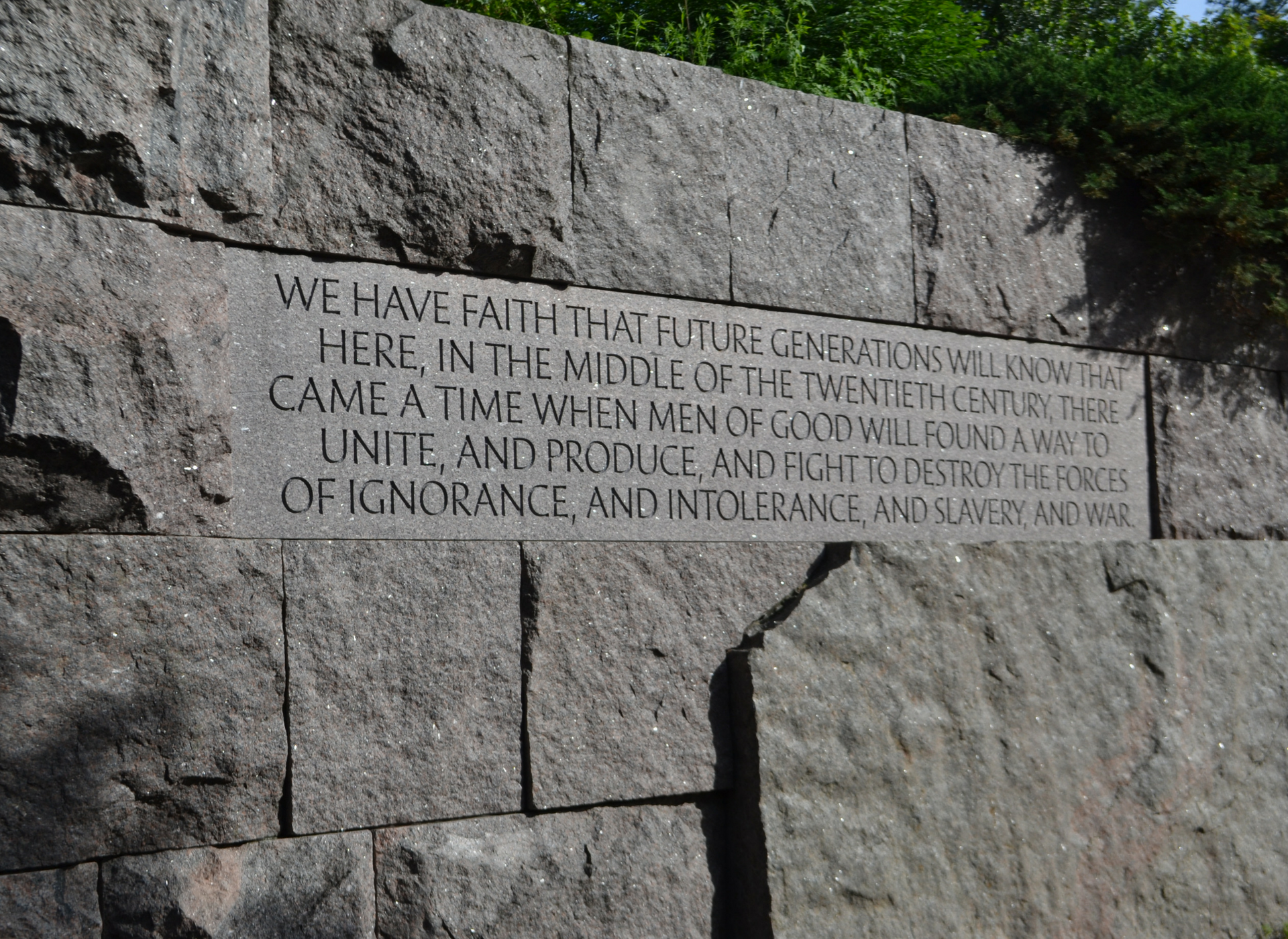
Roosevelt guided the nation through the long years of war. He was tired and ailing, and longed to return to his home on the Hudson River. But at a time when American youth were being called upon to perform even the supreme sacrifice, Roosevelt believed that he could not abandon his post as their commander in chief. In November 1944, he was elected to a fourth term in office. FDR was determined to do his duty until the end was achieved—victory over the Axis powers. It is for his devotion to duty, and courage and confidence as our leader in the face of the greatest global war humanity has ever endured, that everyday visitors to his memorial can see how the American people to this day feel a special connection to Franklin D. Roosevelt, commander in chief.
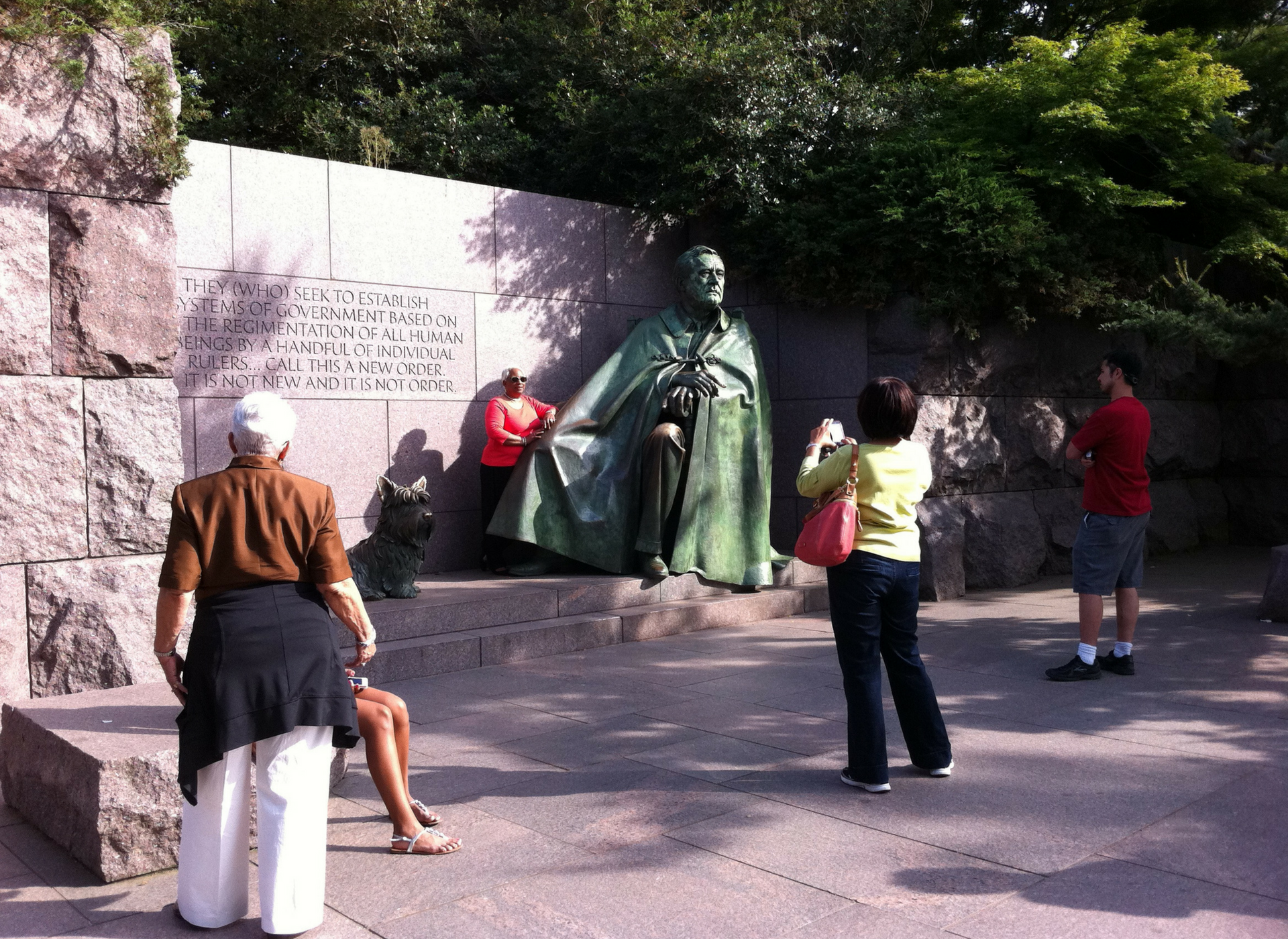
Note: This is the fourth of six posts about Franklin D. Roosevelt memorials. Read Part One. Part Two. Part Three. Part Five.
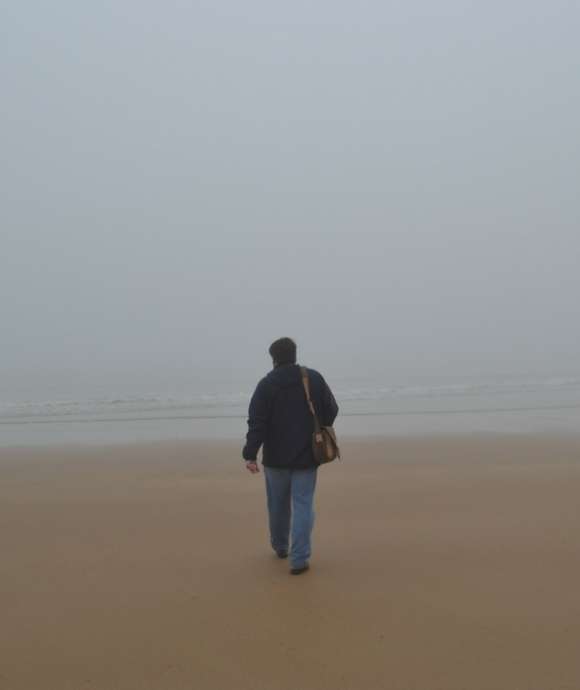
"No matter one’s age, travel is a unique and exciting educational experience. In my work, I have had the opportunity to reflect on history, events, and people in the places where they experienced life. Through the viewfinder, we can not only find history and perspective, but create memory, and evoke our evergreen past."
– Keith Huxen, PhD, Senior Director of Research and History, The National WWII Museum
Keith Huxen
Keith is the former Senior Director of Research and History in the Institute for the Study of War and Democracy at The National WWII Museum.
Cite this article:
MLA Citation:
APA Citation:
Chicago Style Citation:
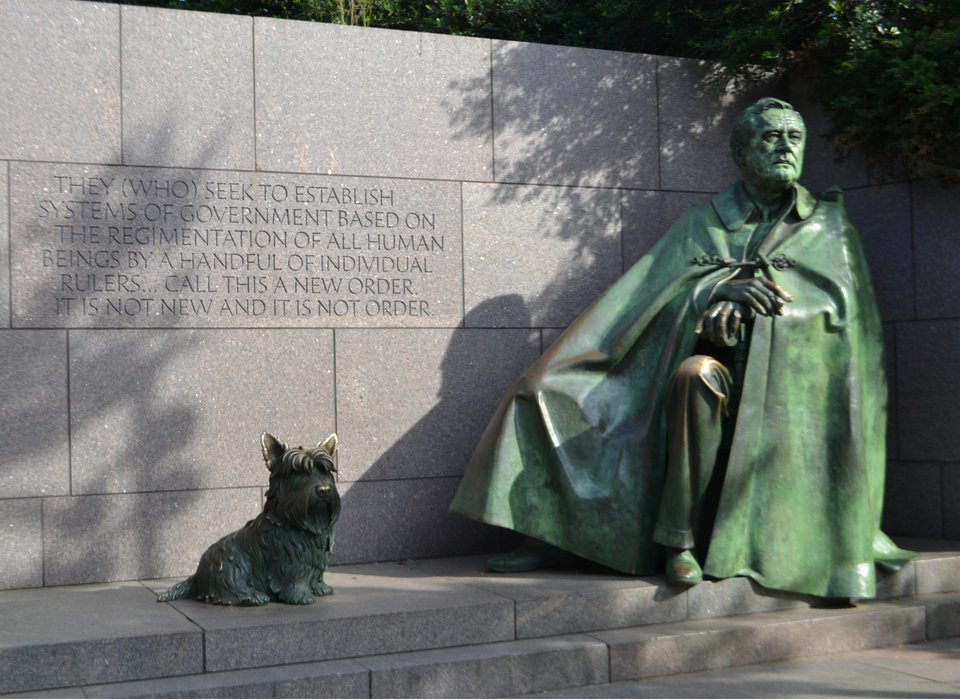
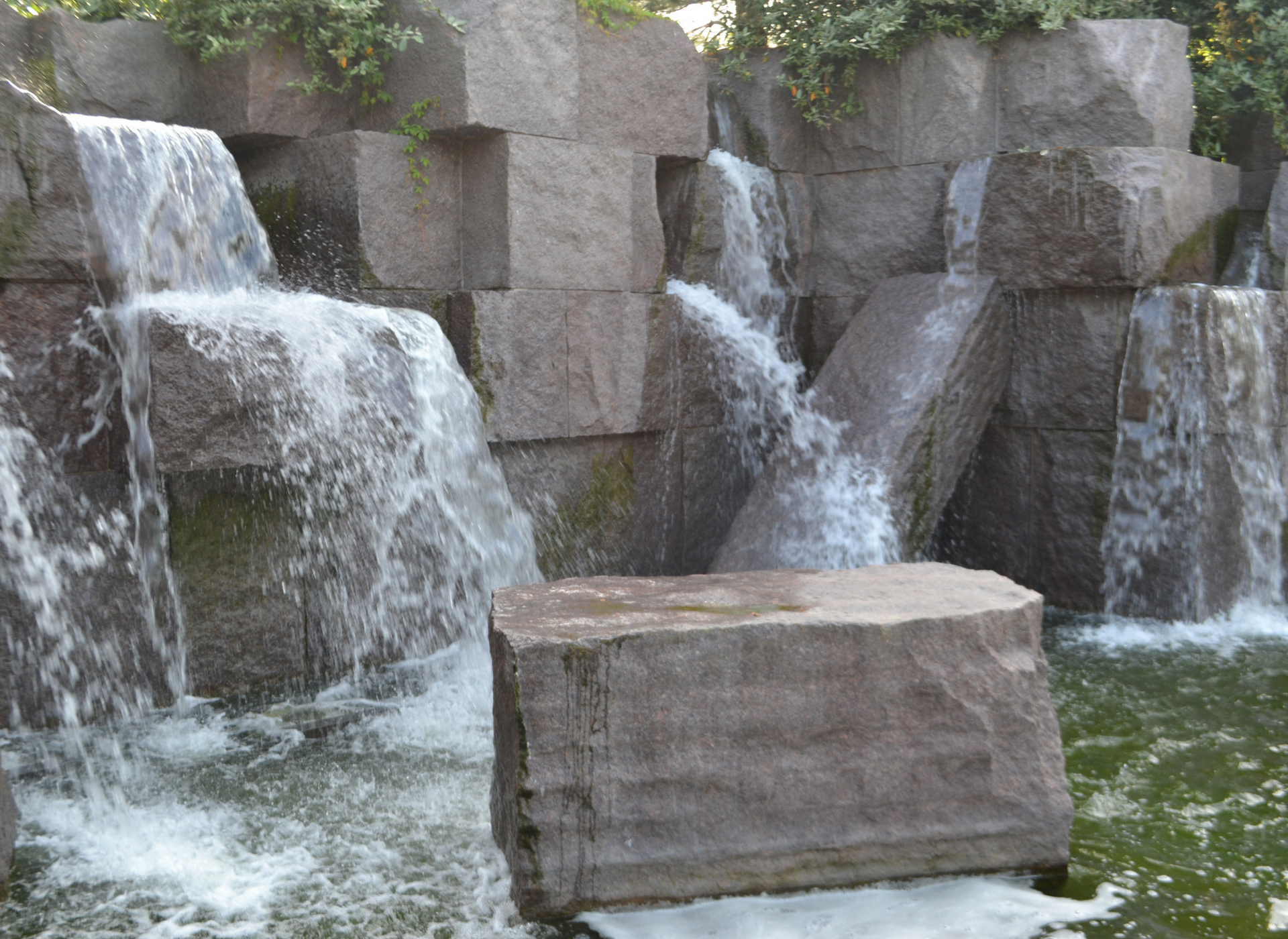
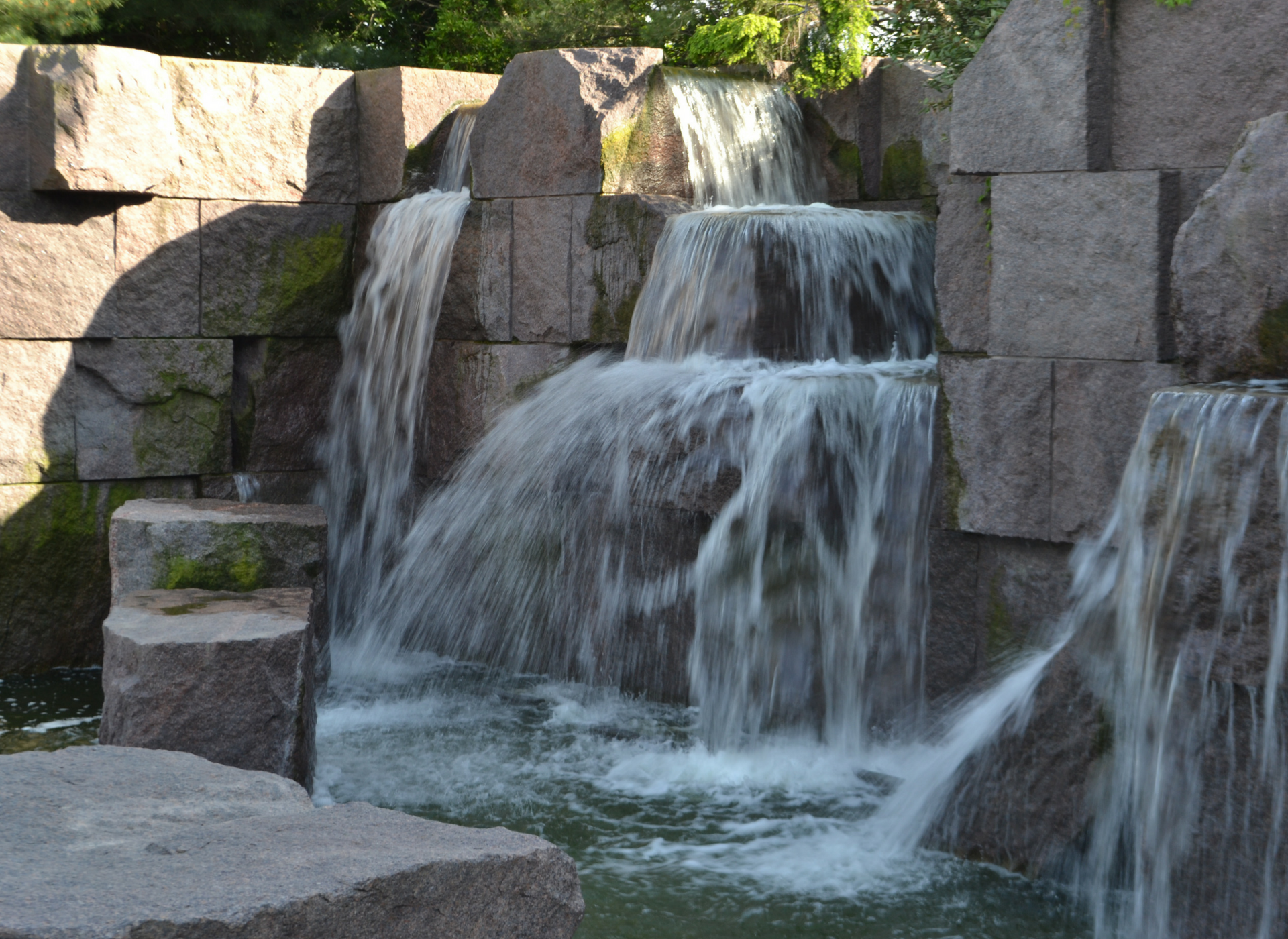
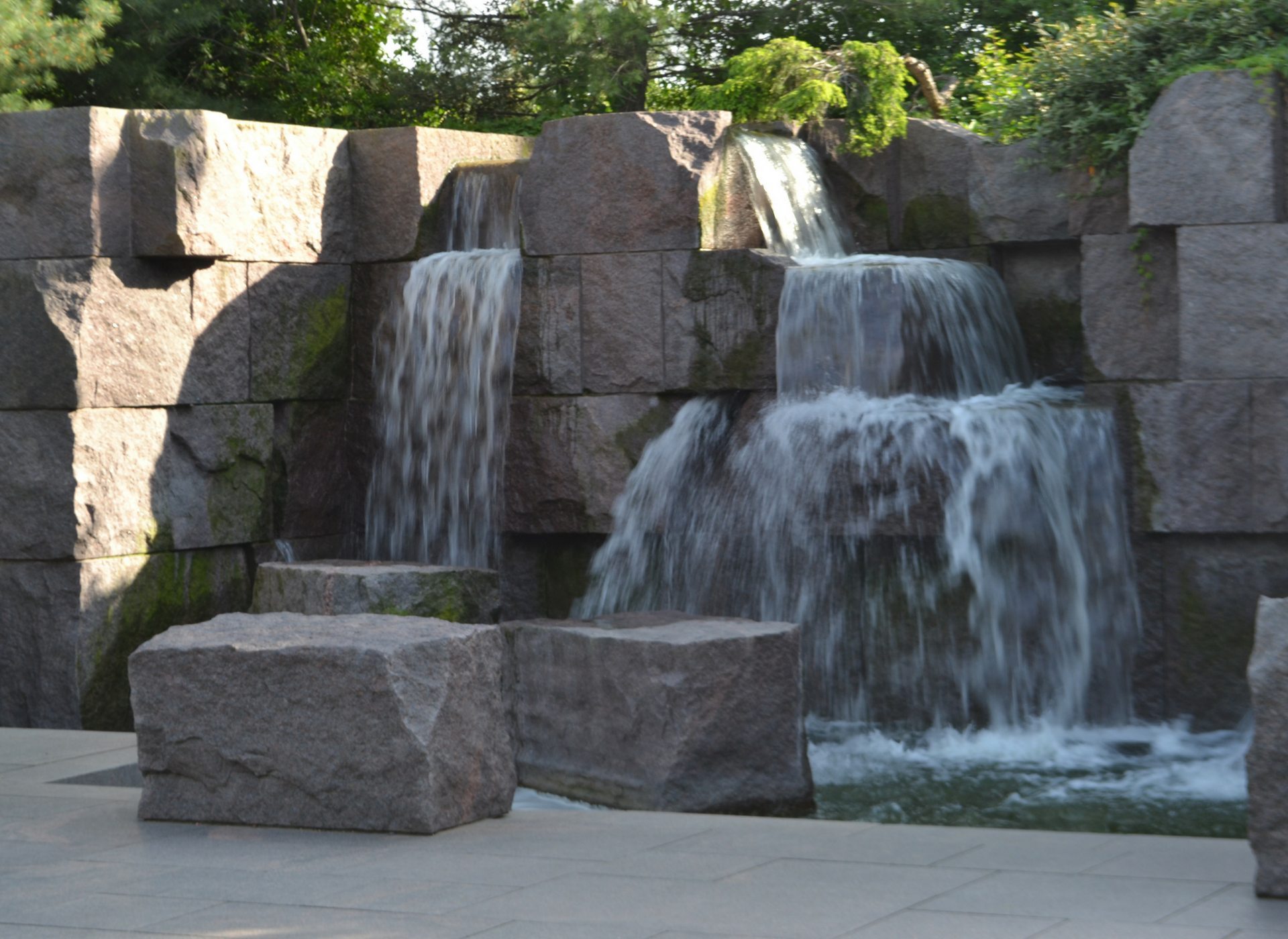

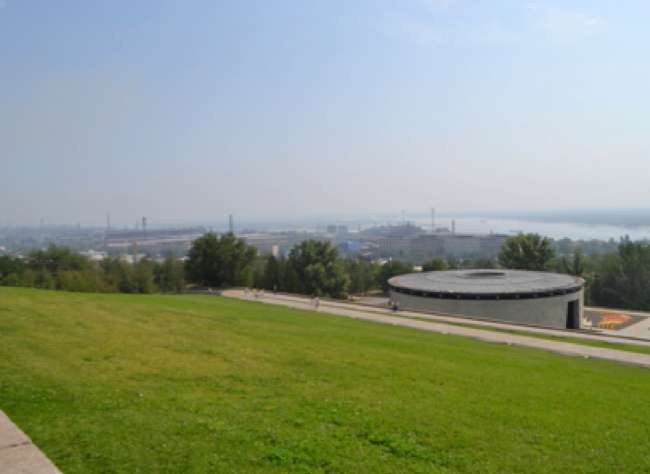
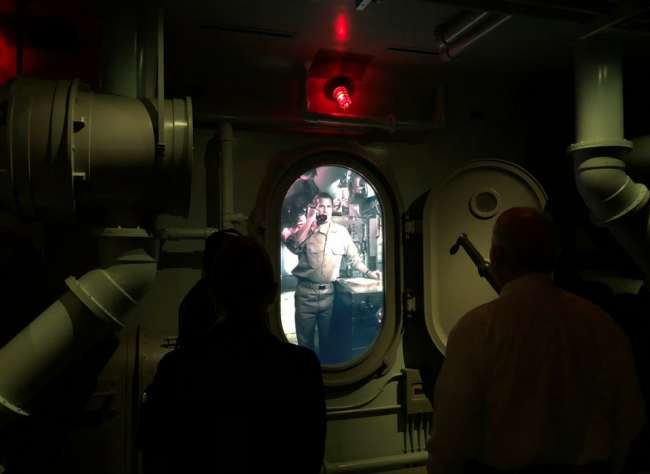
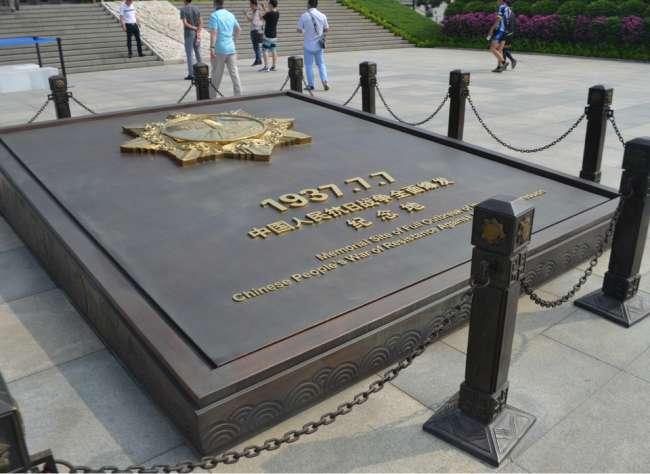



![Max Fuchs, New York City cantor, sings as Rabbi Sydney [sic] Lefkowitz, Richmond, VA, conducts the first Jewish services from Germany.](/sites/default/files/styles/max_650x650/public/2025-10/image1.jpg)



